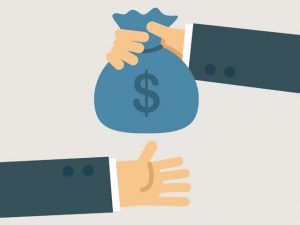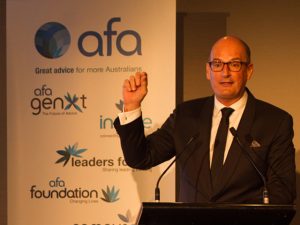Welcome to the next instalment of Chris Unwin’s ‘Chrisisms’ series. Chris’s thoughts and ideas will help you navigate your path to success as a risk-focused financial advice professional…
Red Lights/Green Lights
Have you ever likened the sales process to driving down a long straight road where the only potential hazards are traffic lights?
The sales process is like driving down a long straight road where the only potential hazards are traffic lights. All you have to do to arrive at your destination/complete the business is to recognise red lights and green lights and take the appropriate action at each of them i.e. stop at a red light and get going when it turns green and keep going at green lights.
Let’s take a look at the two most common red lights in the sales process:
1. Negative body language
This is most common when a potential client first sits alongside you at the first client meeting (N.B. not across a desk or a table from you – see a future Chrisism for an explanation of this!). As an extreme example, if they sit down with their fists clenched, their nearside leg crossed, their nearside shoulder turned away and their arms crossed, this is the “Ok, so what’s it all about?” position and it represents a clear red light. So what must you do? Stop! Now you need to do whatever is necessary to relax your client, namely talk about anything but business and preferably get them to talk about themselves. Only when the negative body language signals have disappeared i.e. the light has turned green can you start to talk business.
2. Objections
When you get an objection (whether it be on the phone or face to face) you must stop and handle the objection. Once you have handled the objection satisfactorily, thereby turning the light green, you must get going again i.e. ask for the appointment or ask for the business, because if you hang around at the green light, what will eventually happen? The light will turn red again i.e. you will get another objection.
The only difference between the sales process and driving down a long straight road with traffic lights is that, in the sales process, there is no such thing as an amber light – they are either red or green. Most drivers who come to an amber light will keep going as if it was green and sometimes advisers mistake what is actually a red light in the sales process for an amber light and keep going, thereby leaving an escape route open for the client down the track.
Let me give you an example. There will be many occasions (or should be anyway!) in the sales process when you ask a client for their agreement with something or their commitment to something. If they respond with anything other than 100% agreement or commitment, this is a red light, which means you need to stop and go that extra yard to get the client’s 100% agreement or commitment.
A common example of an “amber light” is when you ask a client for their agreement on or commitment to something and, instead of giving you an unequivocal “Yes, they say something like “Probably”. This is a red light and it only turns green when the client says “Yes”.
As far as green lights are concerned, the main thing to remember is to keep going when encountering green lights because if you stop at a green light, then it is only a matter of time until it turns red! The most obvious example of stopping at a green light is when a client is clearly ready and willing to go ahead and do business, but the business still doesn’t eventuate – why? Because you didn’t ask for it! Remember – it is much more preferable to ask for the business too early and have to provide more information or reassurance before it is concluded than to ask for the business too late (when the client has run out of time) or not at all (when the client has run out of inclination!)
Trauma Cover is woefully undersold by most advisers
The Irresistible Combination
Can you motivate your clients to want as much Trauma Cover as they can reasonable afford and to want to own it for as long as possible? If not, would you like to know how?
I have had so many advisers tell me that they find Trauma Cover really hard to sell, primarily because they regard it as too expensive and it is usually the last cab off the rank after IP, Term & TPD.
Well, I believe that the Miracle Product (formerly known as Trauma Cover!) is the jewel in the personal protection product crown and it is woefully undersold by most advisers and therefore largely unappreciated by their clients.
Although I will be talking about lots of different aspects of the Miracle Product over the coming months, today I just want to focus on the irresistible combination. I want to make sure that from now on you are all sharing the irresistible combination with your clients – especially your younger clients aged 35 or under.
How many of your clients have bought Trauma Cover (or any other personal protection product for that matter) because they expect to claim? None of them, I would guess – they have all bought it “just in case“. This means they regard the chances of claiming on the policy as only a possibility, and in most cases a remote one – after all, ‘It’s not going to happen to me, is it?’.
Well, think again! A survey conducted by General Reinsurance Life in 2007 found that the percentage likelihood of a 30 year-old male in Australia suffering a ‘trauma’ as defined in a Trauma policy before the age of 70, i.e. within the life of the policy, was 68%! This most definitely represents a probability, therefore, rather than a possibility.
But if likelihood of incidence was the single most important criterion for popularity of product, then what would be the most popular protection product? Term Cover, of course, because that is renewable all the way to 99. So as long as you keep it going, you are almost guaranteed to claim! But this does not motivate your client. Why not? Because they are dead and therefore receive no benefit themselves!
What makes an irresistible combination is when you combine a likelihood of claim with a likelihood of recovery. There was a large medical survey conducted in the USA back in 1990 which found, as long as 27 years ago, that if caught early enough, then the likely recovery rate from cancer, heart attack and stroke was 70%. Well, with all the medical advances and early detection opportunities that now exist, I would suggest to you that for most (not all) types of cancer, heart disease and stroke symptoms, especially if caught early enough, the recovery rate would be well over 70% and in a lot of instances well into the 80s or even 90s.
So if we combine a likelihood of incidence of 68% with a likelihood of recovery of 70%+, I believe we have an irresistible combination, which means that, as long as we own it for as long as possible (stepped vs level premiums will be another Chrisism in due course), the Miracle Product is the only personal protection product on which we are not only likely to claim, but we are also likely to be around to benefit.
Now share this with your clients!

Chris Unwin is a financial adviser of 37 years standing and has been a specialist risk adviser for the last 22 years. His training and consulting business has operated for 12 years and it specialises in helping advisers across the full spectrum of experience with their client engagement skills, both in the risk advice specific space as well as in the more generic soft skills space.
…And if anyone would like to receive Chris Unwin’s Chrisisms on a fortnightly basis, just email him with your details, including the state in which you reside.
Contact or follow the author: Telephone: +61 417 281 034 | Website | Email | LinkedIn













